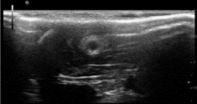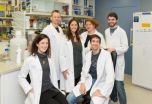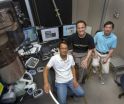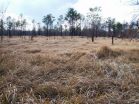(Press-News.org) Researchers from Aarhus University, Denmark, and the University of Wisconsin-Madison, USA, have developed a new approach to measure the combined exposure of species to both climate and land use change. This new metric was used to assess the risk to species in the face of combined rates of climate and land use for the US from 2001 to 2051.
Their results, which have just been published in Nature Climate Change, highlight areas expected to be most vulnerable to losses in biodiversity and ecosystem function due to the individual or combined effects of climate and land use change predicted by the mid-21st century. Exposure was highest in the Great Plains and Northeast U.S., suggesting that these areas will be particularly at risk to the combined effects of climate and land use change. Furthermore, the paper reports that climate is changing at a greater rate than land use change in most regions of the US and that the joint rates of climate and land use change are low across much of the interior west.
Different strategies for conservation and management
"By assessing climate and land use changes simultaneously, we found a substantially greater estimate of species exposure to global change threats than either land use or climate change alone," explains Alejandro Ordonez from Department of Bioscience, Aarhus University. "For example, in areas where climate and land use change will be slower, species may be able to persist in place and adapt to the changes, or move into new suitable habitats. In contrast, the areas where climate change and land use change are accelerating will create the greatest threats to ecological communities, and ecosystems may not be able to keep up." Ordonez adds: "It would seem intuitive that such a combined map would have been done before, but this is the first time that we have been able to map this combined risk in to the future thanks to the socio-economic land use projections generated by two of the authors".
By integrating both future climate change and intensifying land use threats, the authors indicate that a different set of conservation priorities emerge than if one considers risk from climate change alone.
"We know that the impacts of both climate change and land use change will be highly localized, which means that management and adaptation-planning strategies must be flexible to account for the interactions of both. In our study, we use two regions to highlight how a set of broad-scale management strategies and interventions that can be useful for conservation decision-making, and to assess where and which adaptation efforts are most likely to be successful under unique combinations of risks due to climate and land use change," says Ordonez.
For example, within the U.S., regions exposed to both high rates of climate change and reductions in forest or rangelands may be priorities for land acquisition and protection efforts. However, potential reserve areas should be carefully evaluated in the context of urbanization given limited conservation resources, as this may require substantial investments for land acquisition.
INFORMATION:
For more information, please contact:
Dr. Alejandro Ordonez, Postdoctoral Research Associate
Department of Bioscience - Ecoinformatics and Biodiversity
Aarhus University, Denmark
Email: alejandro.ordonez@biology.au.dk
Phone: +45 87156569
The double threat of climate and land use change enhances risks to biodiversity
2014-08-18
ELSE PRESS RELEASES FROM THIS DATE:
BGRF announces OncoFinder algorithm for reducing errors in transcriptome analysis
2014-08-18
Scientists from the Biogerontology Research Foundation (BGRF), a UK-based charity founded to support ageing research and address the challenges of a rapidly ageing population, propose a new concept for signalome-wide analysis of changes in intracellular pathways, called OncoFinder, which allows for accurate and robust cross-platform analysis of gene expression data. This new technique will allow scientists to derive useful information from and compare the hundreds of thousands of data sets obtained using legacy equipment as well as data sets obtained from biological samples ...
Ultrasound imaging of chitosan nerve conduits that bridge sciatic nerve defects in rats
2014-08-18
New simple and effective methods are needed to better evaluate the outcomes of repair using nerve conduits in vivo. Ultrasound is a common noninvasive clinical detection modality that has been used in many fields. However, ultrasound has only rarely been used to observe implanted nerve conduits in vivo. Hongkui Wang and co-workers from Affiliated Hospital of Nantong University report the first use of ultrasound to noninvasively observe the changes in chitosan nerve conduits implanted in rats over time. The ultrasound imaging clearly showed whether there are unsatisfactory ...
An inside-out vein graft filled with PRP for repair of a short sciatic nerve defect
2014-08-18
Platelet-rich plasma (PRP) containing various growth factors can promote nerve regeneration. An inside-out vein graft can substitute nerve autograft to repair short nerve defects. It is hypothesized that an inside-out vein graft filled with platelet-rich plasma shows better effects in the repair of short sciatic nerve defects. In a study reported on the Neural Regeneration Research (Vol. 9, No. 14, 2014), an inside-out vein autograft filled with platelet-rich plasma was used to bridge a 10 mm-long sciatic nerve defect in rats. At 6 and 8 weeks, the sciatic nerve function ...
Club cells are 'bad guys' during flu infection
2014-08-18
A specialized subset of lung cells can shake flu infection, yet they remain stamped with an inflammatory gene signature that wreaks havoc in the lung, according to a study published in The Journal of Experimental Medicine.
Seasonal flu is caused by influenza virus, which can infect a variety of cell types in the lung. Infected cells are typically destroyed by the virus itself or by immune cells that attack infected cells. The resulting inflammation can linger on long after the virus has been eliminated leading to persistent symptoms and, in some cases, severe tissue damage.
Club ...
Myc inhibition is an effective therapeutic strategy against most aggressive brain tumors
2014-08-18
Barcelona, 18 August 2014. Research led by the Vall d'Hebron Institute of Oncology (VHIO) evidence the most conclusive preclinical results to-date validating Myc inhibition as a therapeutic strategy in glioma – a highly agressive tumor type that notoriously outsmarts current anti-cancer therapies. The study led by Laura Soucek, Principal Investigator of VHIO´s Mouse Models of Cancer Therapies Group, published today in Nature Communications, not only represents an important step forward in ultimately providing brain glioma patients with new therapeutic avenues, but also ...
Sun's activity influences natural climate change
2014-08-18
For the first time, a research team has been able to reconstruct the solar activity at the end of the last ice age, around 20,000-10,000 years ago, by analysing trace elements in ice cores in Greenland and cave formations from China. During the last glacial maximum, Sweden was covered in a thick ice sheet that stretched all the way down to northern Germany and sea levels were more than 100 metres lower than they are today, because the water was frozen in the extensive ice caps. The new study shows that the sun's variation influences the climate in a similar way regardless ...
Antibiotics in early life may alter immunity long-term
2014-08-18
New University of British Columbia research found that receiving antibiotic treatments early in life can increase susceptibility to specific diseases later on.
Most bacteria living in the gut play a positive role in promoting a healthy immune system, but antibiotic treatments often do not discriminate between good and bad bacteria. The study published today in Journal of Allergy and Clinical Immunology helps scientists understand how different antibiotics affect good bacteria.
"This is the first step to understanding which bacteria are absolutely necessary to develop ...
Promising ferroelectric materials suffer from unexpected electric polarizations
2014-08-18
UPTON, NY—Electronic devices with unprecedented efficiency and data storage may someday run on ferroelectrics—remarkable materials that use built-in electric polarizations to read and write digital information, outperforming the magnets inside most popular data-driven technology. But ferroelectrics must first overcome a few key stumbling blocks, including a curious habit of "forgetting" stored data.
Now, scientists at the U.S. Department of Energy's Brookhaven National Laboratory have discovered nanoscale asymmetries and charge preferences hidden within ferroelectrics ...
International scientific team criticizes adoption of 'novel ecosystems' by policymakers
2014-08-18
Embracing "novel" ecosystems is dangerous, according to a new study by an international team.
Novel ecosystems arise when human activities transform biological communities through species invasions and environmental change. They are seemingly ubiquitous, and thus many policymakers and ecologists argue for them to be accepted as the "new normal"—an idea the researchers say is a bad one.
In the study, published in the September edition of the academic journal Trends in Ecology and Evolution, the international team argues that adopting novel ecosystems is based on faulty, ...
Visual 'gist' helps us figure out where a crowd is looking
2014-08-18
Have you ever seen a crowd of people looking off into the distance, perhaps toward a passing biker or up to the top of a building? There's a good chance you looked there, too, instantly, even without paying attention to the individuals in the group. How can we tell where a crowd is looking with so little effort?
Researchers at the University of California, Berkeley and the University of Denver have discovered that we rely on a specialized visual process known as "ensemble coding" to perceive where a crowd is looking. Their new study shows that we are able to tell where ...




